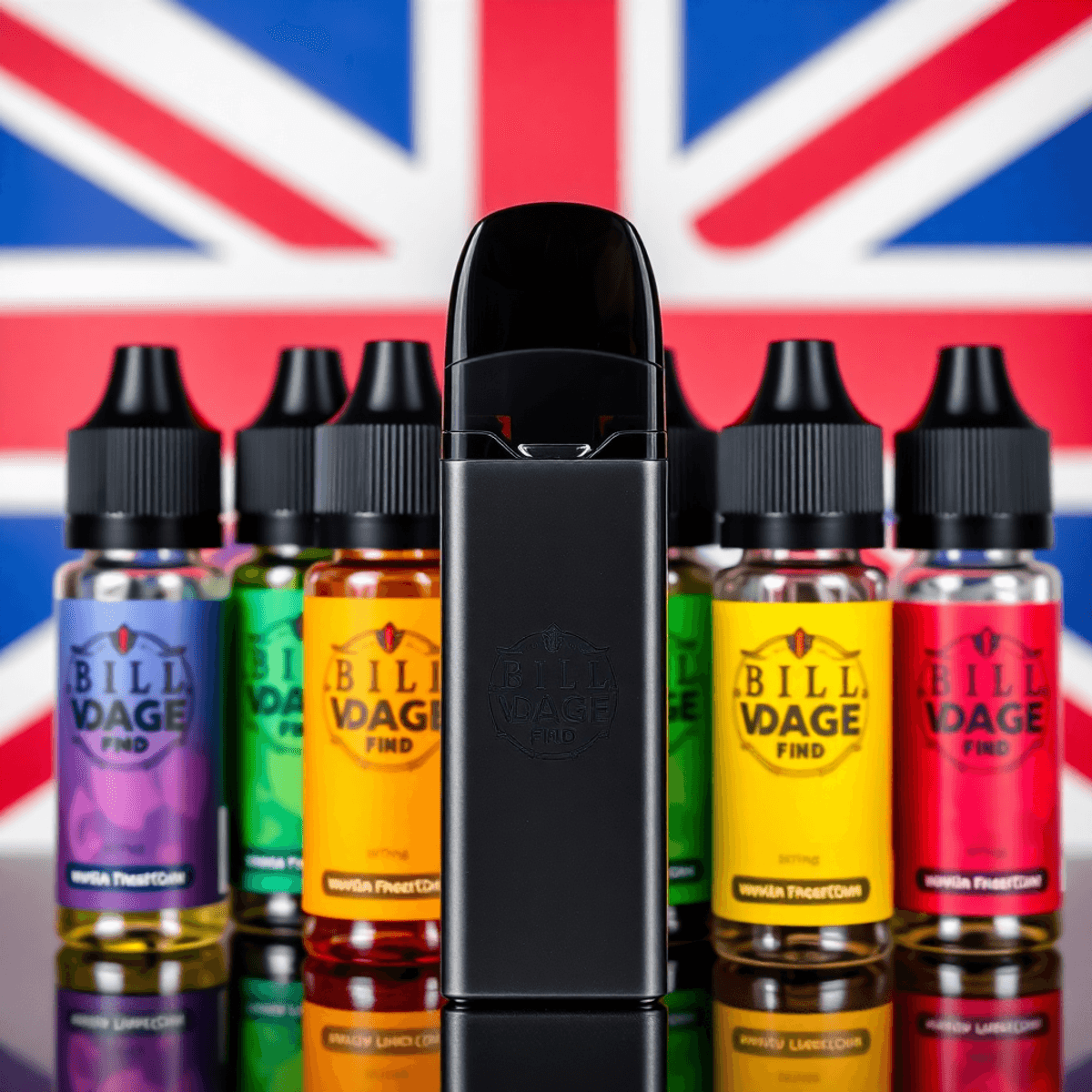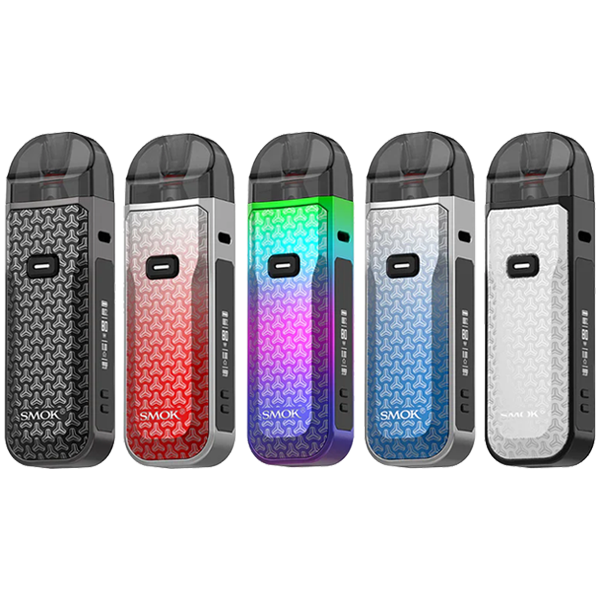TL;DR
E-liquids contain ingredients such as vegetable glycerin (VG) and propylene glycol (PG) that have calories, but the amount inhaled when vaping is tiny and won’t meaningfully affect weight. A typical vape session contains under 1 calorie, and even a 10ml bottle has a negligible total spread across many uses.
Are you curious about how many calories are in a vape? You’re not alone! With the growing popularity of vaping, many are wondering if those flavoured clouds have any impact on their waistlines. Whether you’re a seasoned vaper or just getting started, understanding the calorie count in e-liquids is essential, especially when considering weight management. In this blog, we’ll uncover the truth about vaping and its calorie content, helping you make informed choices in your vaping habits.
Understanding the Components of E-Liquids
When it comes to vaping, many enthusiasts are aware that the magic lies within the e-liquid, also known as vape juice. However, not everyone fully grasps what goes into these mysterious concoctions. Understanding the basic components of e-liquids is crucial, not only for enjoying a better vaping experience but also to comprehend their impact on calorie intake.
Base Ingredients: VG and PG
E-liquids are primarily composed of two base ingredients: Vegetable Glycerin (VG) and Propylene Glycol (PG). Both of these compounds play a pivotal role in the vaping experience.
– Vegetable Glycerin (VG): VG is a thick, sweet liquid derived from plant oils. It’s known for producing large vapour clouds, making it the preferred choice for many cloud-chasers. VG has a slightly sweet taste, which can contribute, a tiny bit, to the overall flavour of an e-liquid.
– Propylene Glycol (PG): PG is a thinner, odourless, and tasteless liquid. It’s responsible for carrying flavour more effectively than VG, thus enhancing the taste of the vape. PG also delivers a stronger throat hit, mimicking the sensation of smoking traditional tobacco.
Though VG and PG both serve different purposes in e-liquids, their presence does add some caloric content. However, this isn’t something most vapers usually fret over, as the quantity is relatively small compared to solid food items.
Additional Flavourings and Their Impact
Flavourings are what make vaping an enticing experience for many, offering a pallet of tastes from fruity and sweet to spicy and savoury. These flavourings can be either natural or artificial and are crafted to emulate our favourite desserts, drinks, and even classic tobacco blends.
While the flavourings are a big hit among vapers, they bring with them an added consideration in the form of calorie content. The concentration of flavourings in e-liquids is generally low, often between 1-15% of the solution. This means while they do contribute to the overall calorie count, their impact is minimal. Nonetheless, if you’re a vaper who likes indulging in sweet flavours, it’s worth considering how these might add a few calories to your intake.
The Role of Nicotine in Caloric Content
Ah, nicotine, the ingredient that often draws people to vaping in the first place. Nicotine is a stimulant found naturally in tobacco plants and is commonly included in e-liquids to help smokers transition into the vaping world.
Interestingly, nicotine itself does have a caloric value, calculated at around 5 calories per gram. However, given that an average vape cartridge contains anywhere from 6 mg to 24 mg of nicotine, the actual intake of calories from nicotine remains negligible. Therefore, while nicotine contributes to the overall energy content of an e-liquid, its impact on your daily calorie intake is minor and shouldn’t raise significant concerns for most vapers from a caloric perspective.
Caloric Content in Vapes
Now that we’ve unveiled the components responsible for the delicious plumes of vapour, let’s delve into the caloric content specifically attributable to vaping. This section will address how to calculate the calories found in e-liquids, provide comparisons across different brands, and tackle some myths regarding vaping and weight gain.
Calculating Calories: A Closer Look at E-Liquids
Calculating the calorie count in e-liquids can sometimes seem a bit elusive, but fear not! It’s more straightforward than it appears. The fundamental components, VG, PG, flavourings, and nicotine, each contribute calories to varying extents.
– VG On Its Own: Contains around 4.32 calories per millilitre. Thus, an e-liquid with a high VG content will naturally bear a higher caloric value.
– PG and Nicotine: They contribute fewer calories, PG less than VG, and nicotine even less so, as we have already discussed.
– Flavourings: Although they add a small number of calories, when mixed with VG and/or PG, they complete the profile of an e-liquid’s calorie content.
For those keen on crunching numbers, a typical 10ml bottle of e-liquid composed of 70% VG and 30% PG might have somewhere between 40 and 50 calories, primarily owing to the VG content. However, since vaping doesn’t involve ingestion in the traditional sense, the impact on your daily caloric intake might be nominal at best.
Comparing Caloric Content Across Different Brands
It’s essential to note that not all e-liquids are created equal. Brand variations in VG/PG ratios, flavouring concentrations, and nicotine levels mean that the caloric content can differ significantly from one product to another.
– High VG Liquids: If you’re keen on producing those voluminous clouds, you might end up with a higher calorie count.
– Nicotine-Free E-Liquids: These naturally have slightly fewer calories compared to their nicotine-laden counterparts.
The takeaway here is simple: if monitoring your caloric intake is a high priority for you, it might be worthwhile to pay attention to the labels of e-liquids. Opt for lower VG options or slightly dilute your e-liquid if you’re conscious about calorie consumption, but bear in mind that these numbers are negligible in the grand scheme of dietary calorie intake.
Misconceptions About Vaping and Weight Gain
Vaping has been surrounded by a cloud of misconceptions, with some people believing that it directly correlates with weight gain. A popular myth suggests that inhaling flavoured vapour could somehow trick your body into craving more sweets or calories, but this simply isn’t true.
Here’s why:
– Inhalation vs. Ingestion: While some calories do exist in e-liquids, the act of vaping doesn’t equate to consuming these calories the same way eating or drinking does. Thus, it’s unlikely to have any significant impact on your daily dietary intake.
– Nicotine and Metabolism: Nicotine is known to suppress appetite and potentially boost metabolism, making it, in some cases, an indirect factor in weight loss rather than gain.
– Sweet Cravings Myth: There’s no substantial scientific evidence to support the idea that the sweet taste of certain e-liquids leads to actual sugar cravings or weight gain.
Overall, the caloric impact of vaping is minor and, for most people, unlikely to be a determining factor in weight gain. For those concerned about their calorie consumption, being mindful of food and drink intake, which significantly outweighs what you may inhale from a vape, will be far more critical.
So, while it’s good to be informed, when it comes to vaping and calories, you can generally rest easy knowing that your e-liquid is unlikely to derail your dietary or weight management strategies. Instead, enjoy the experience with a proper understanding of what you’re inhaling!
The Impact of Vaping on Weight Management
 Image courtesy: Unsplash
Image courtesy: Unsplash
When it comes to weight management, there are few topics more intriguing than the role of calories. Of course, we’re all familiar with counting calories in our food and drink, but what about vapes? Whether you’re a seasoned vaper or someone considering the switch from smoking, understanding the calorific difference vaping can make to your lifestyle is key.
Vaping as an Alternative to Smoking: Calorific Differences
The first thing to delve into is how vaping stacks up against smoking in terms of calorie content. You might be surprised to learn that traditional cigarettes have zero calories. That’s right! The smoke you inhale from a cigarette doesn’t contain any calories, as it’s primarily made up of burnt tobacco leaves and nicotine. However, the story takes a slight twist with e-liquids.
E-liquids, which are vaporised when you vape, often contain ingredients like propylene glycol, vegetable glycerin, nicotine, and various flavourings. While these ingredients do have caloric values, the amount is minimal. To put it into perspective, a typical bottle of e-liquid might contain anywhere from 5 to 30 calories, depending on its composition and size. Compare this to a can of soda, which contains over 100 calories, and it seems negligible.
Yet, despite their seemingly low-calorie content, it’s crucial to note that these calories aren’t actually meant to be ingested. When vaping, you’re merely inhaling vapour, not swallowing it. So, any minor calorie intake is generally considered insignificant for weight management. It’s essential to remember, though, that unlike smoking, which doesn’t contribute calories, e-liquids do add a little something extra to the equation.
Psychological Impacts: Vaping, Appetite, and Calorie Intake
Now, you may be wondering how does vaping affect your appetite and indirectly, your calorie intake? This is where the psychological impacts come into play. Let’s face it, the process of quitting smoking is notoriously tough, and many turn to vaping as a quit-smoking aid. One reason for this is that vaping can mimic the hand-to-mouth action that smokers are accustomed to, which psychologically helps curb cravings.
But here’s the catch, some people find they snack more often when they quit smoking, due to both decreased nicotine and a need to satisfy that familiar hand-to-mouth routine. However, the act of vaping itself can help mitigate overeating. The array of available vape flavours, ranging from decadent desserts to fresh fruits, can provide a sensory experience that might reduce your craving for sweet, calorie-dense snacks.
On the other hand, some research suggests that nicotine consumption, whether via smoking or vaping, could suppress appetite, potentially leading to weight loss for some users. However, this isn’t a benefit to rely on, as nicotine dependency can have other negative health implications. It’s worth noting that once nicotine levels drop, a return to normal appetite levels is likely, making way for balance in diet and lifestyle.
Managing Weight While Vaping
When managing your weight, while incorporating vaping into your lifestyle, it’s always best to approach it with a balanced perspective. Here are some handy tips on keeping your weight on track:
– Mind the Gap Between Meals: If you’re vaping flavoured e-liquids, be aware that while they might help stave off your sweet tooth, they aren’t a substitute for actual nutrients. Make sure you’re eating balanced meals at regular intervals and maintaining a healthy diet.
– Stay Active: Regular physical activity is a cornerstone of effective weight management. Consider combining your vaping habit with a regular exercise regime. Whether it’s a daily walk, jog, or gym session, keeping active will counterbalance any potential impact of reduced appetite from vaping.
– Stay Hydrated: E-liquids contain propylene glycol, which can have a dehydrating effect. Make sure to drink plenty of water throughout the day. Sometimes, thirst can be mistaken for hunger, leading to unnecessary snacking.
– Be Mindful of Nicotine Levels: If you’re using vaping to manage nicotine cravings, be aware that higher nicotine levels can affect your appetite and metabolism. Gradually reducing nicotine in your e-liquid might help your body adjust to a natural balance in food consumption.
– Consider Your Reasons for Vaping: Ask yourself why you vape. Is it purely for enjoyment, as a smoking cessation tool, or something else? A clear understanding can guide you in managing your habits better and aligning them with your health and weight management goals.
In conclusion, while vaping does introduce a minor calorific component into your lifestyle, its impact on weight is often more psychological and behavioural than physical. Combining a mindful approach to vaping with healthy lifestyle choices can ensure you maintain your weight management goals successfully. Remember, it’s always best to consult with a healthcare professional to tailor advice to your personal health circumstances and goals.
Conclusion
In conclusion, while vaping may seem like a harmless habit calorie-wise, it’s important to be informed about the potential calorie content in e-liquids. Most e-liquids might not pack a significant calorie punch compared to traditional snacks or beverages, but staying mindful is key.
– Keep an eye on sweetened or flavoured e-liquids, as they may contain more calories than you’d expect.
– If you’re managing your weight, incorporating this knowledge into your broader strategy could be beneficial.
Remember, balance and awareness go a long way in maintaining a healthy lifestyle while enjoying your vaping experience.




